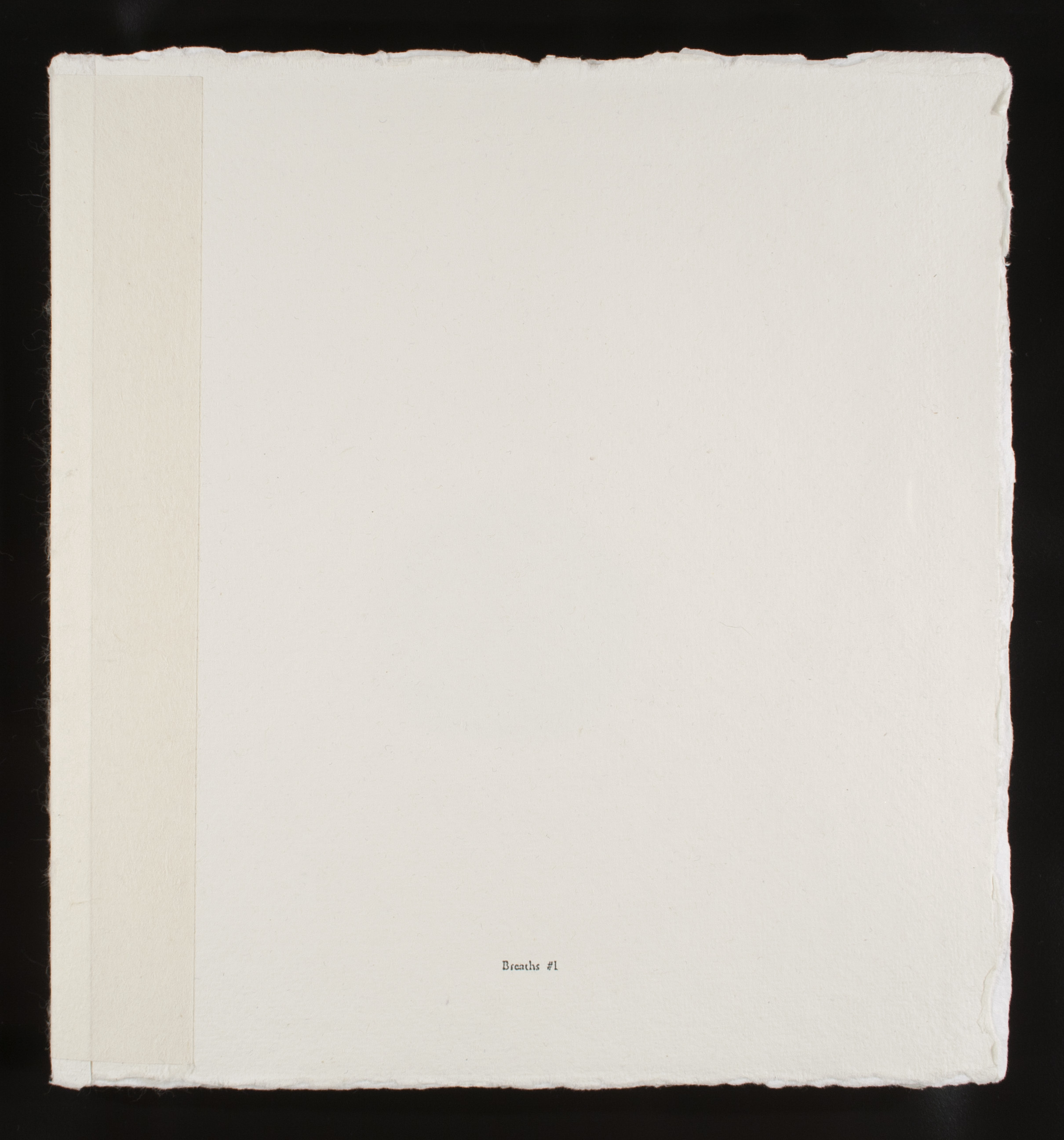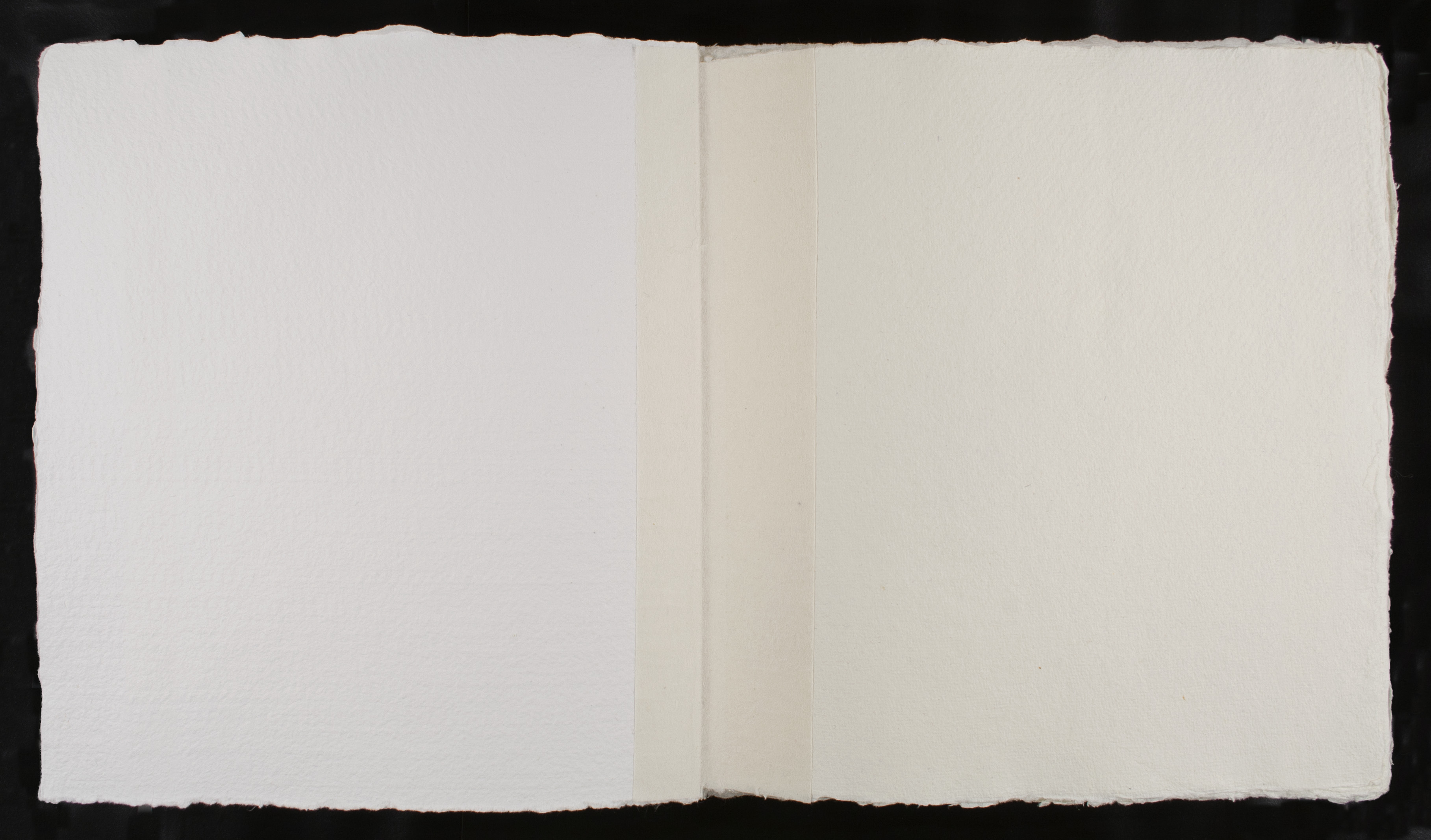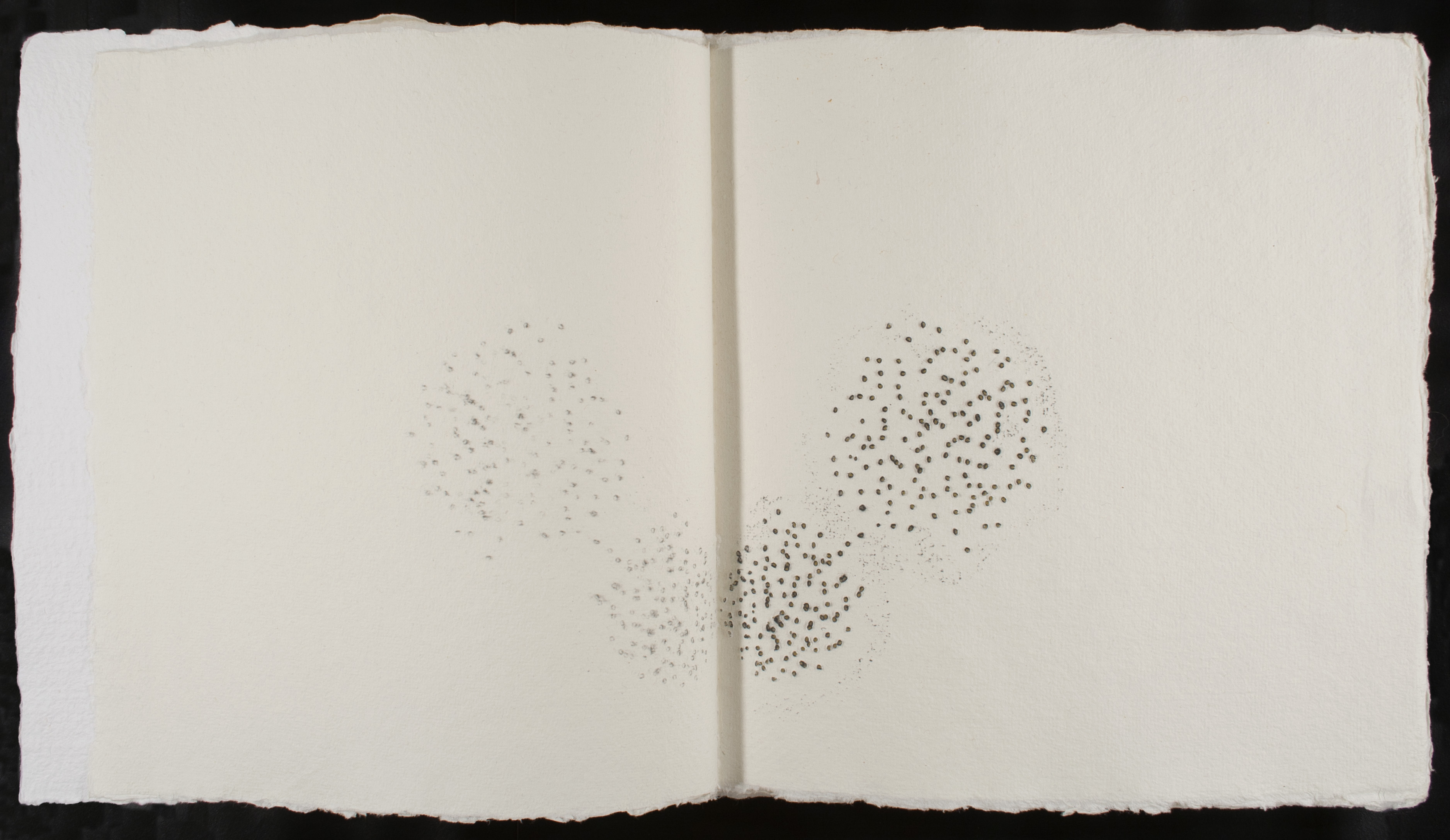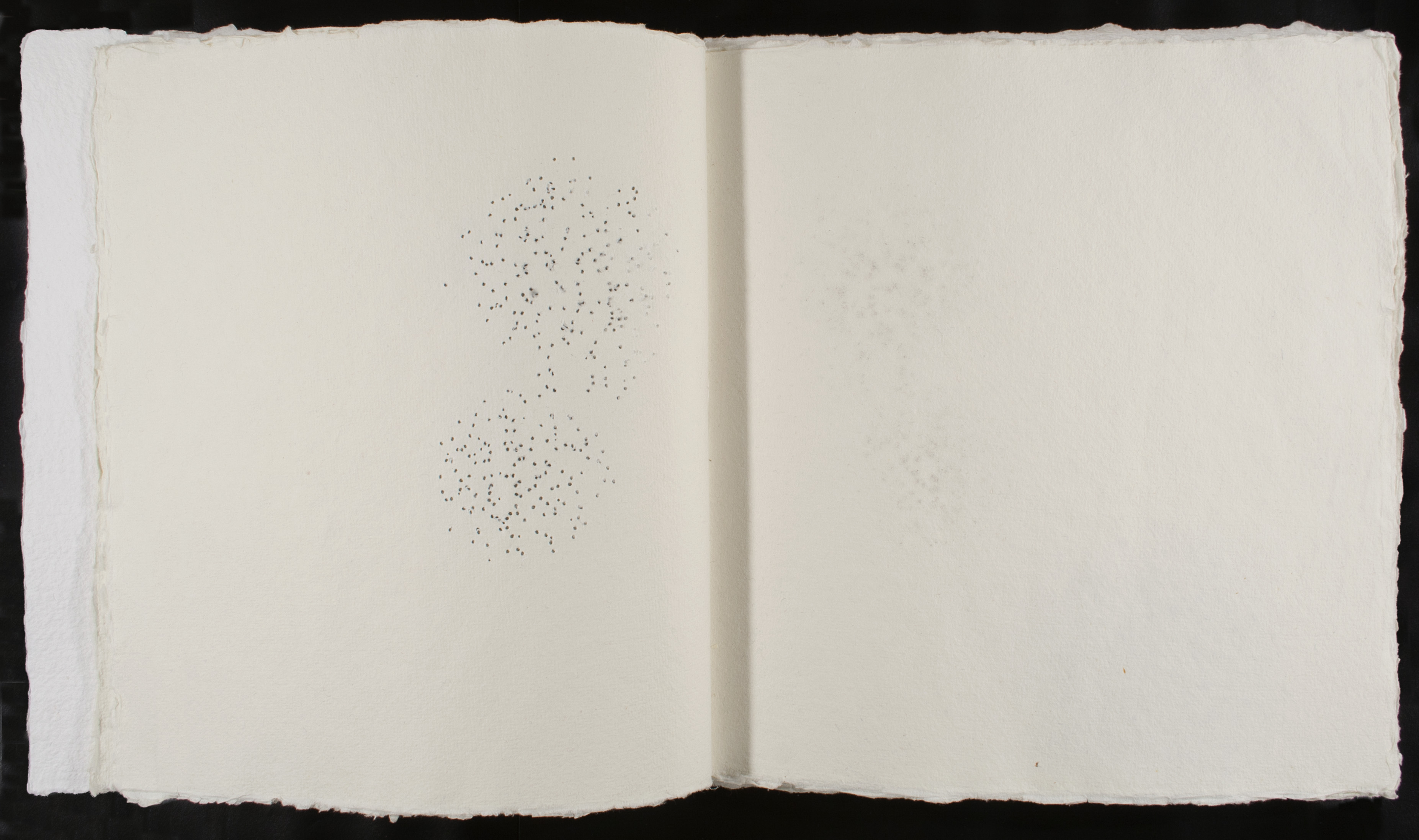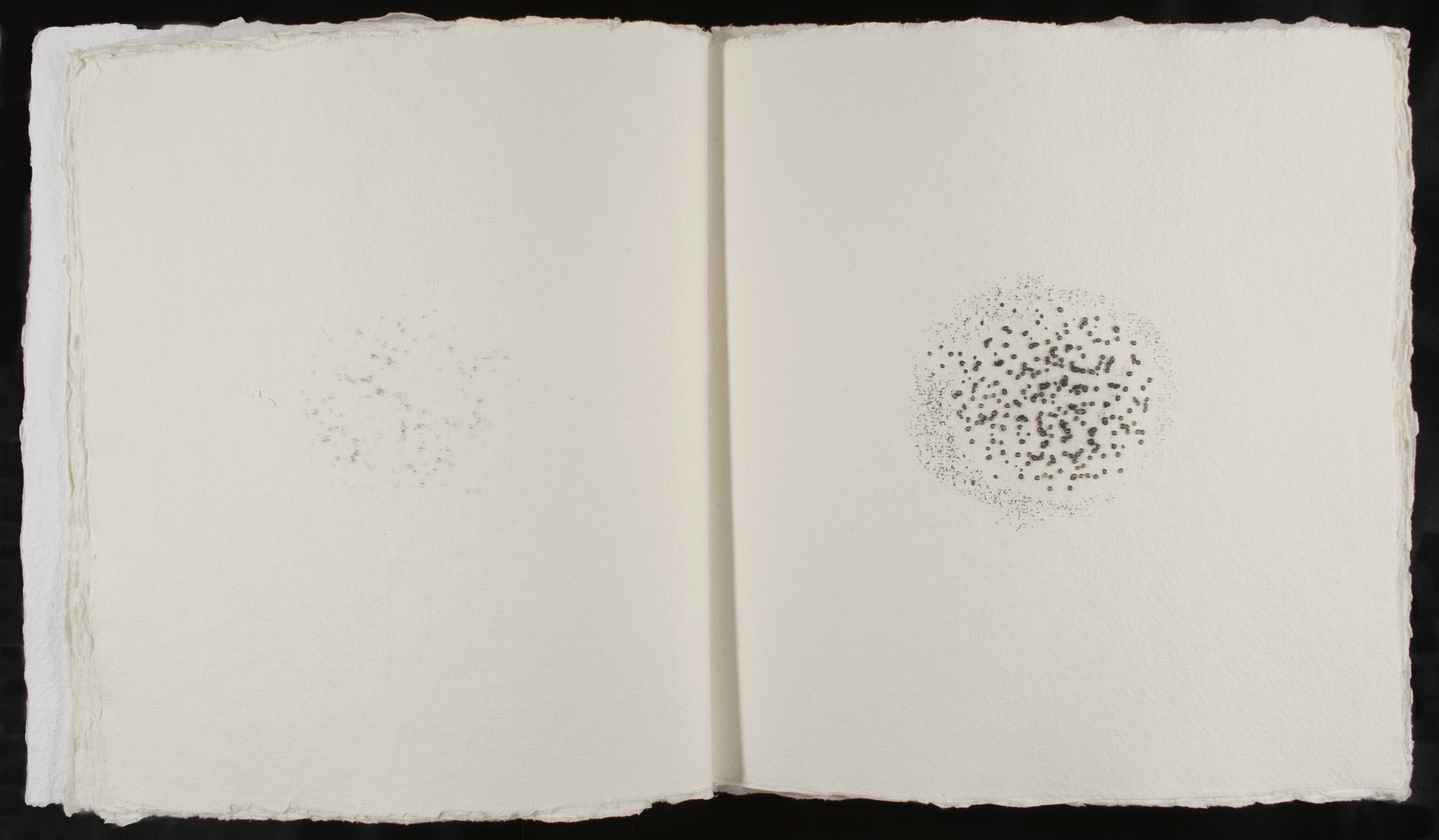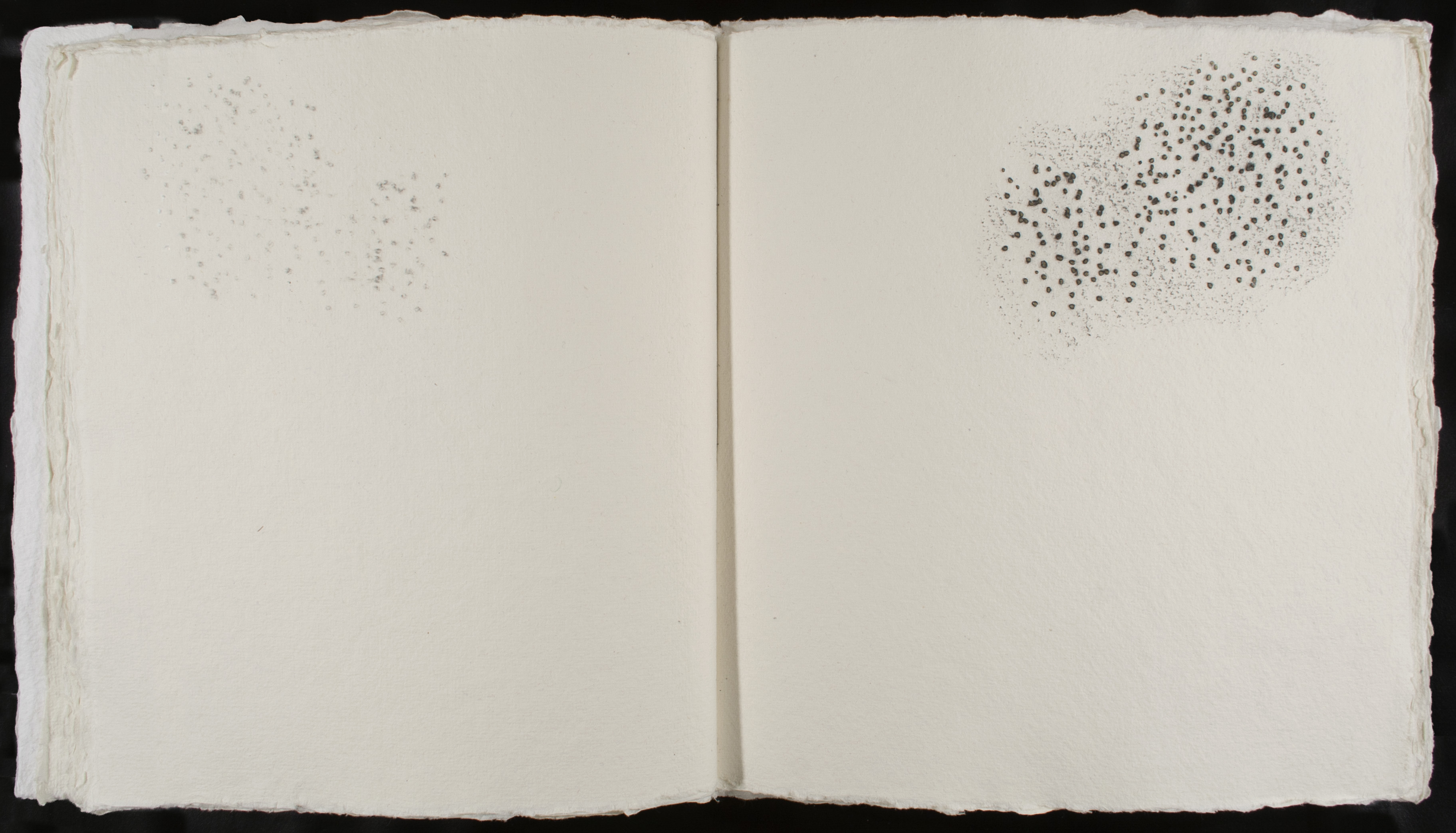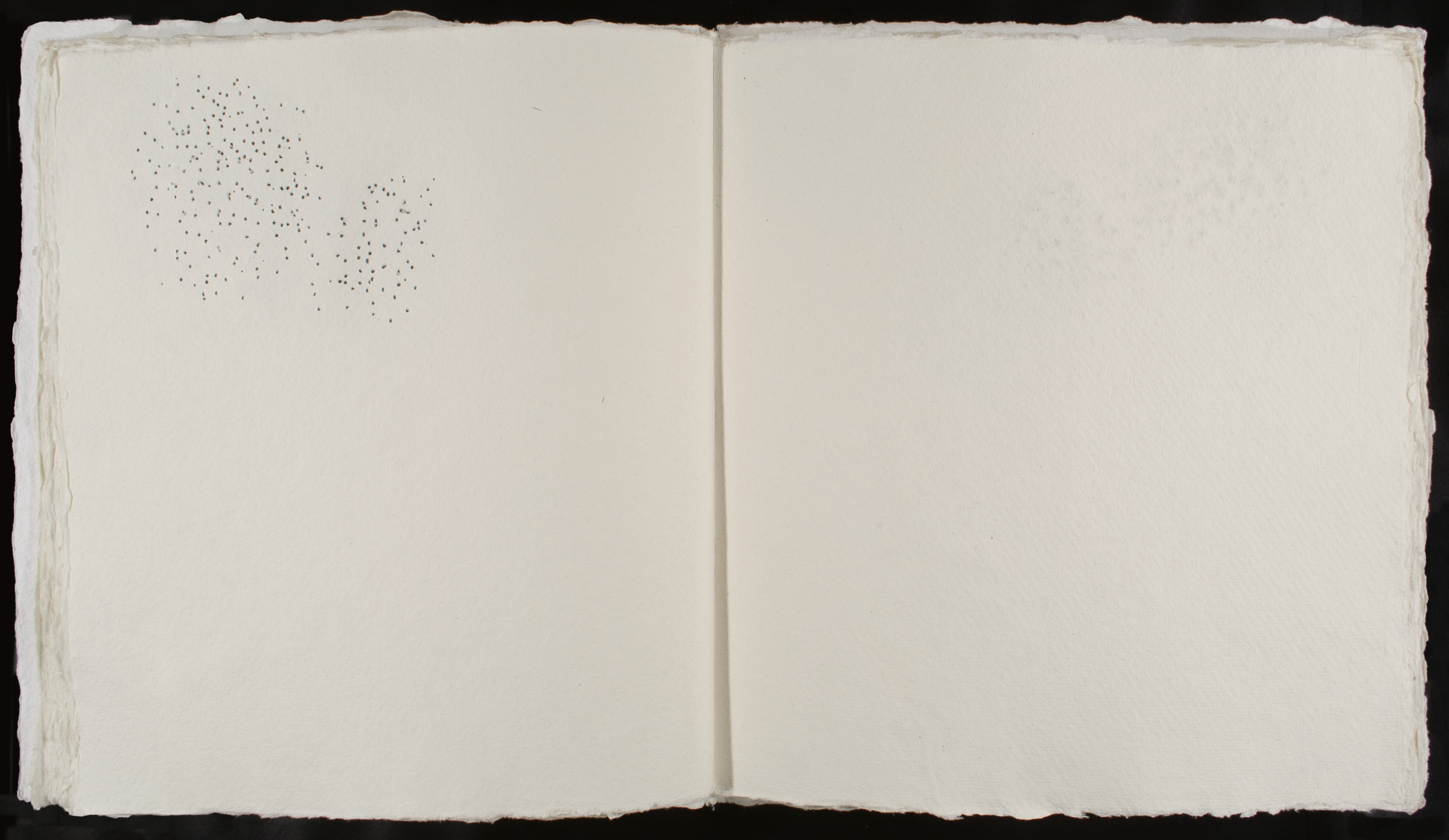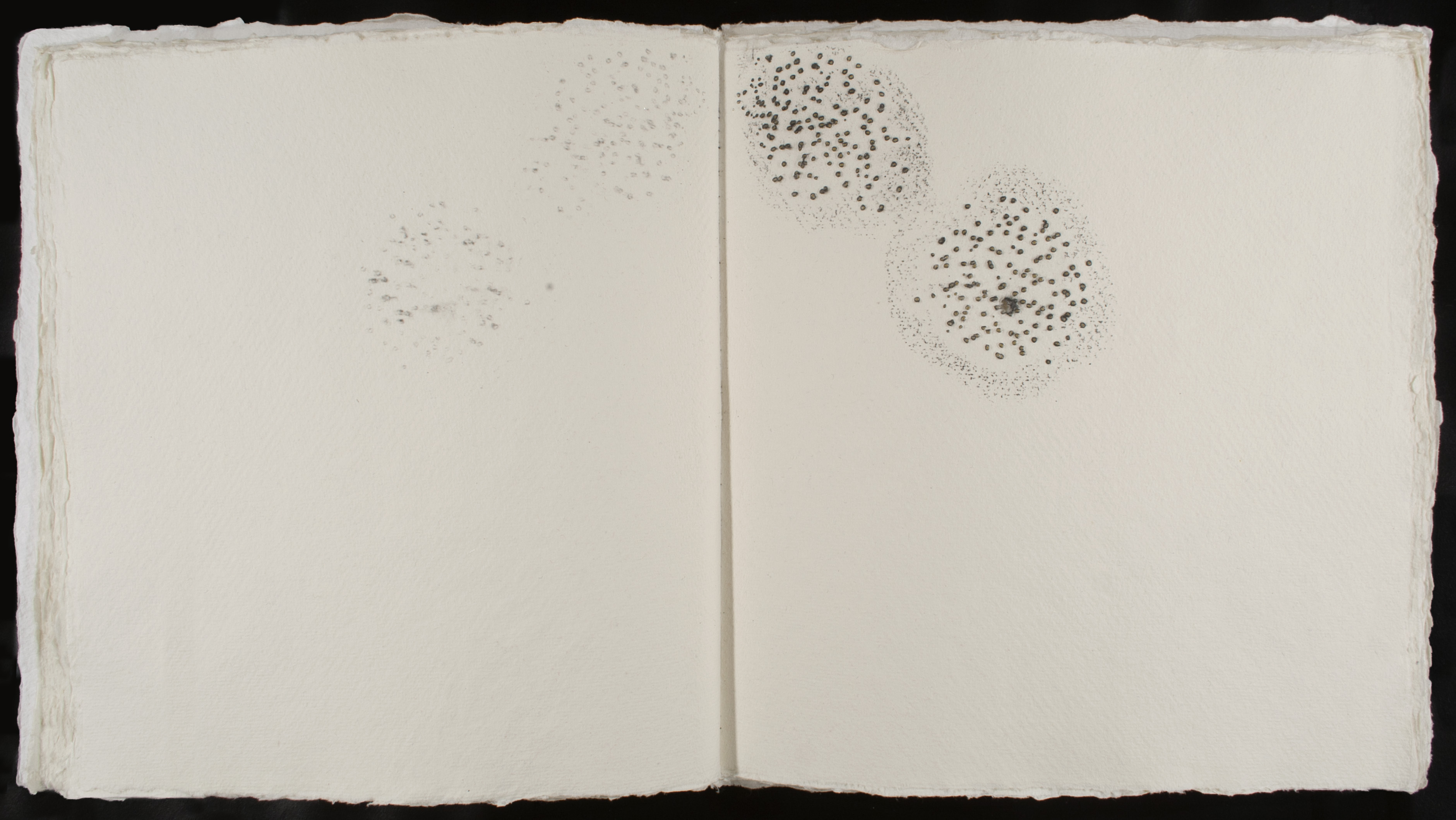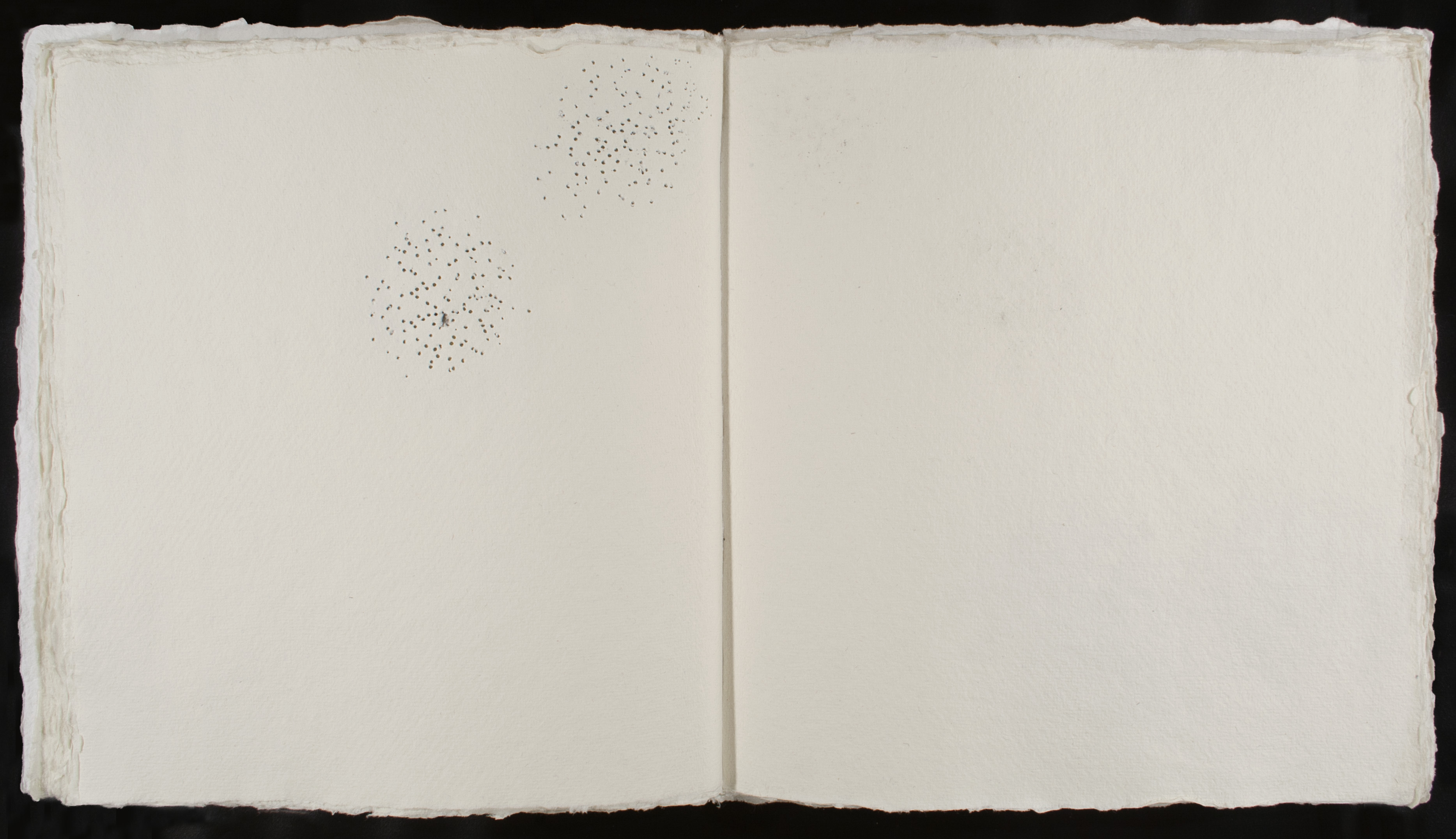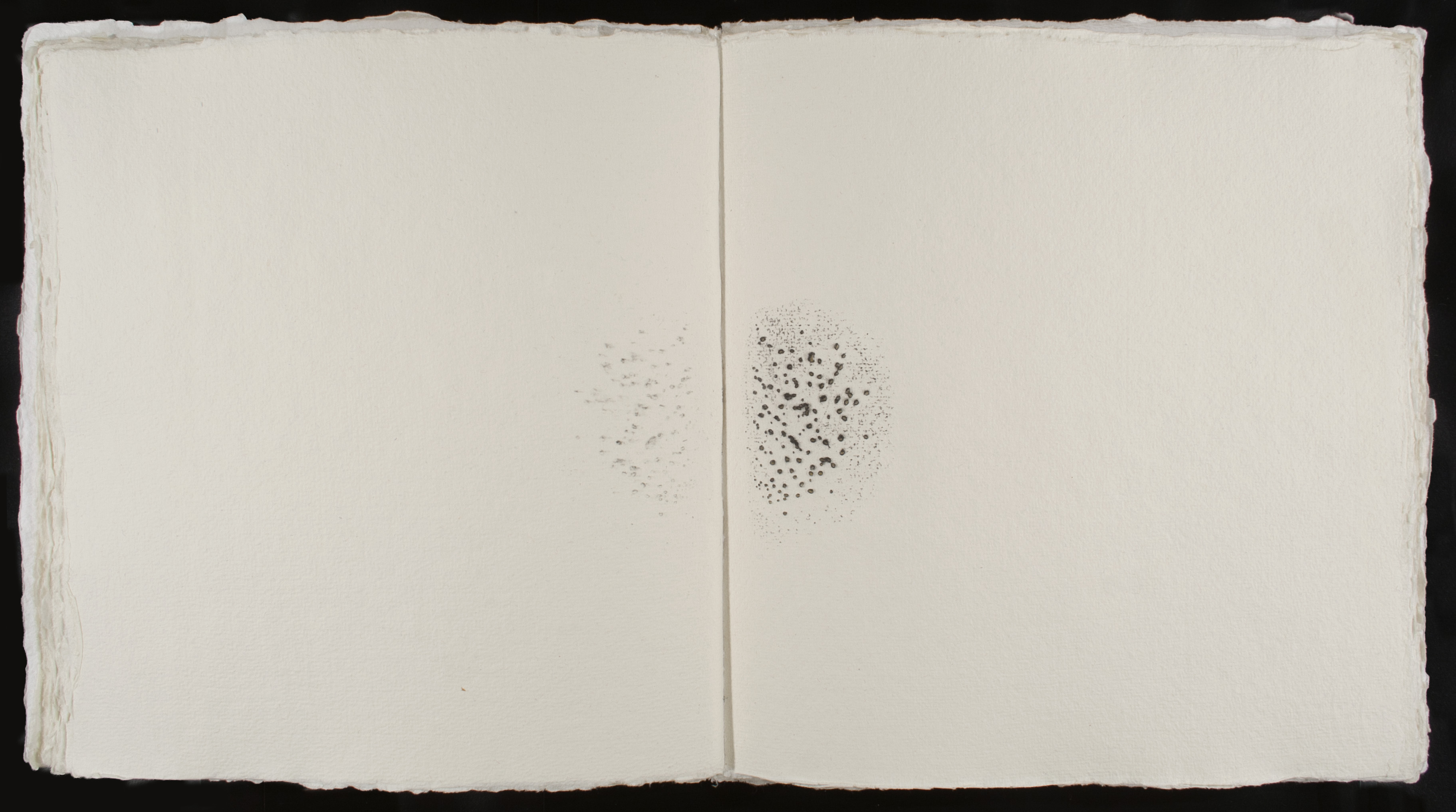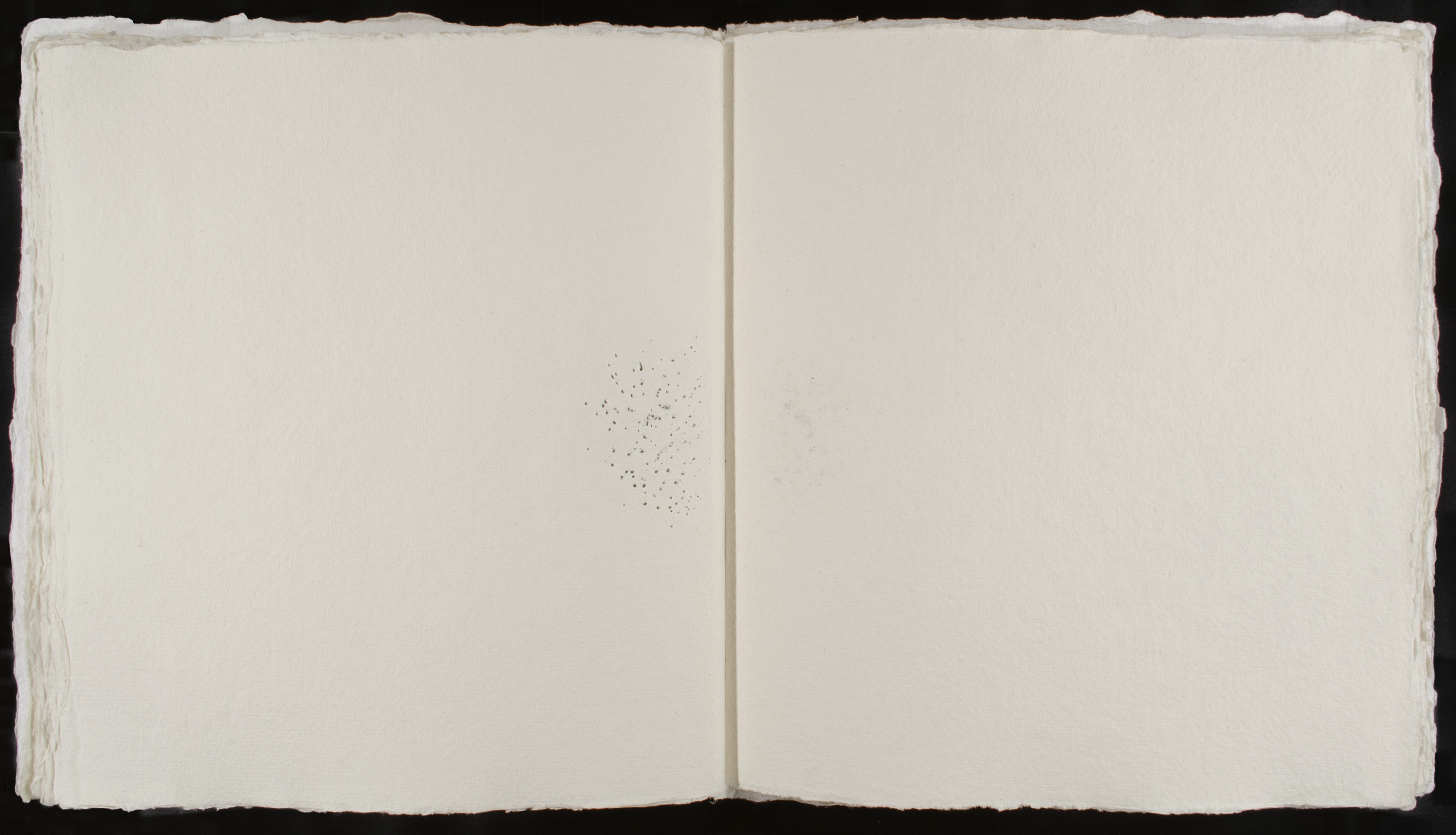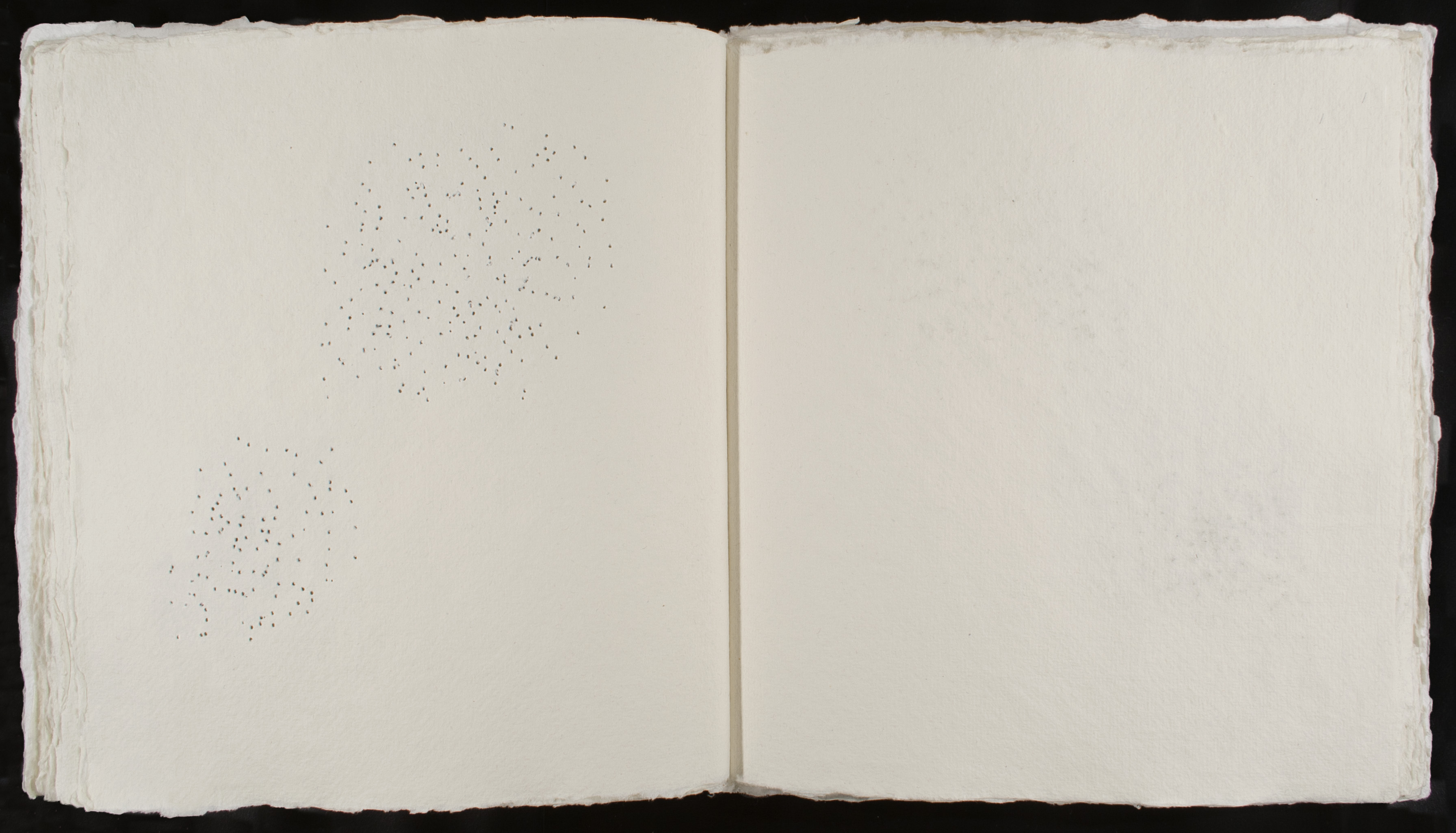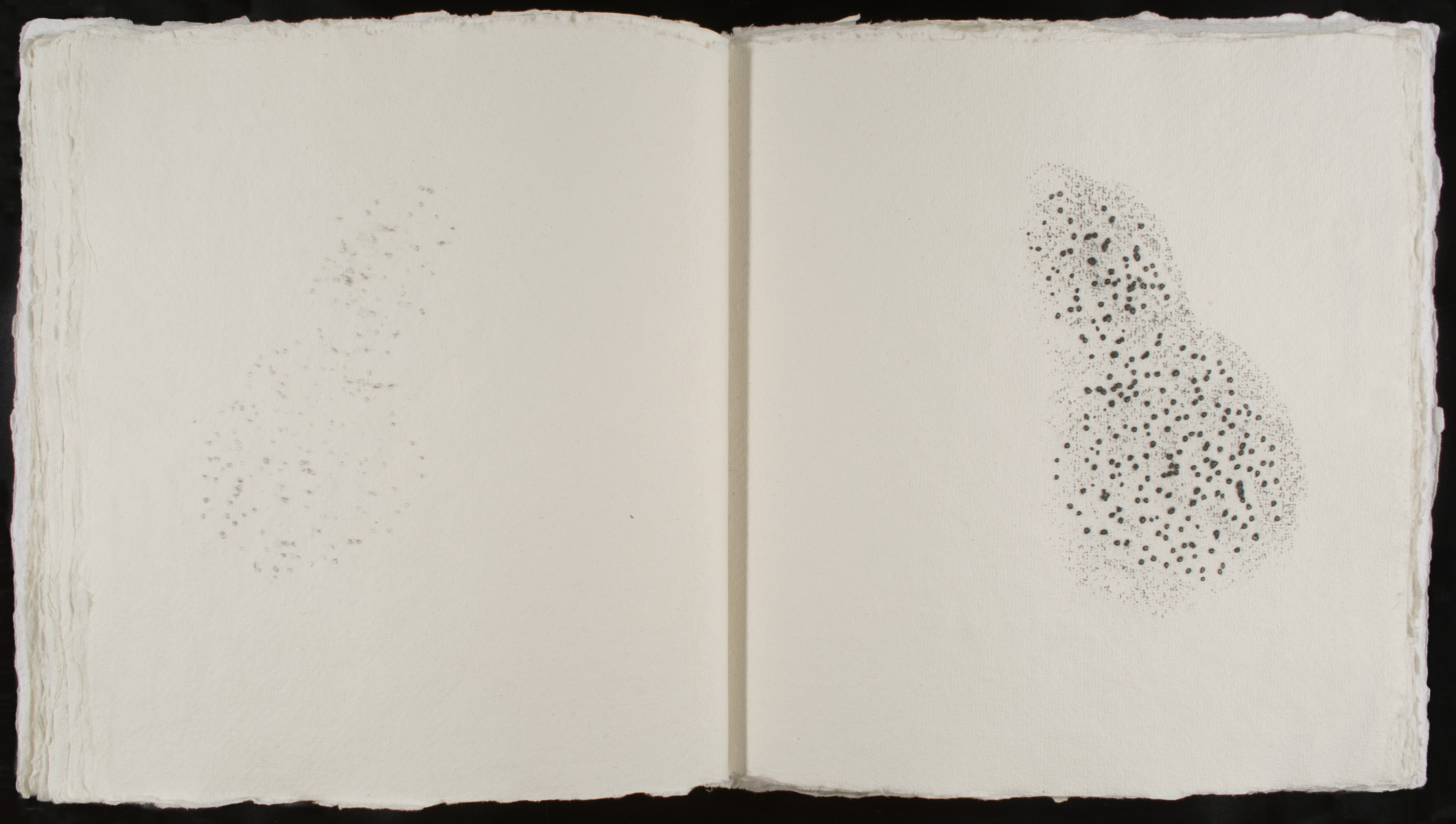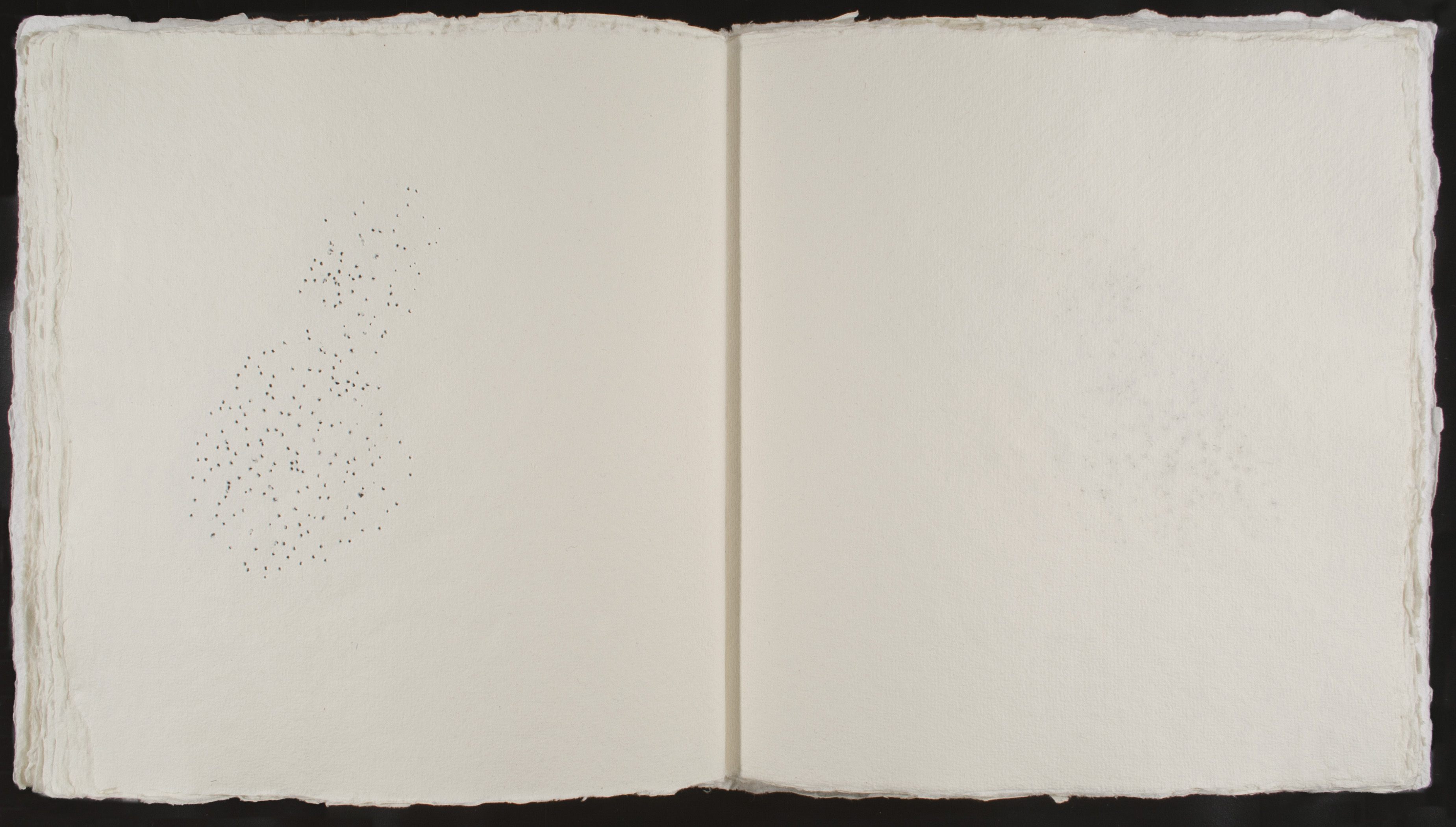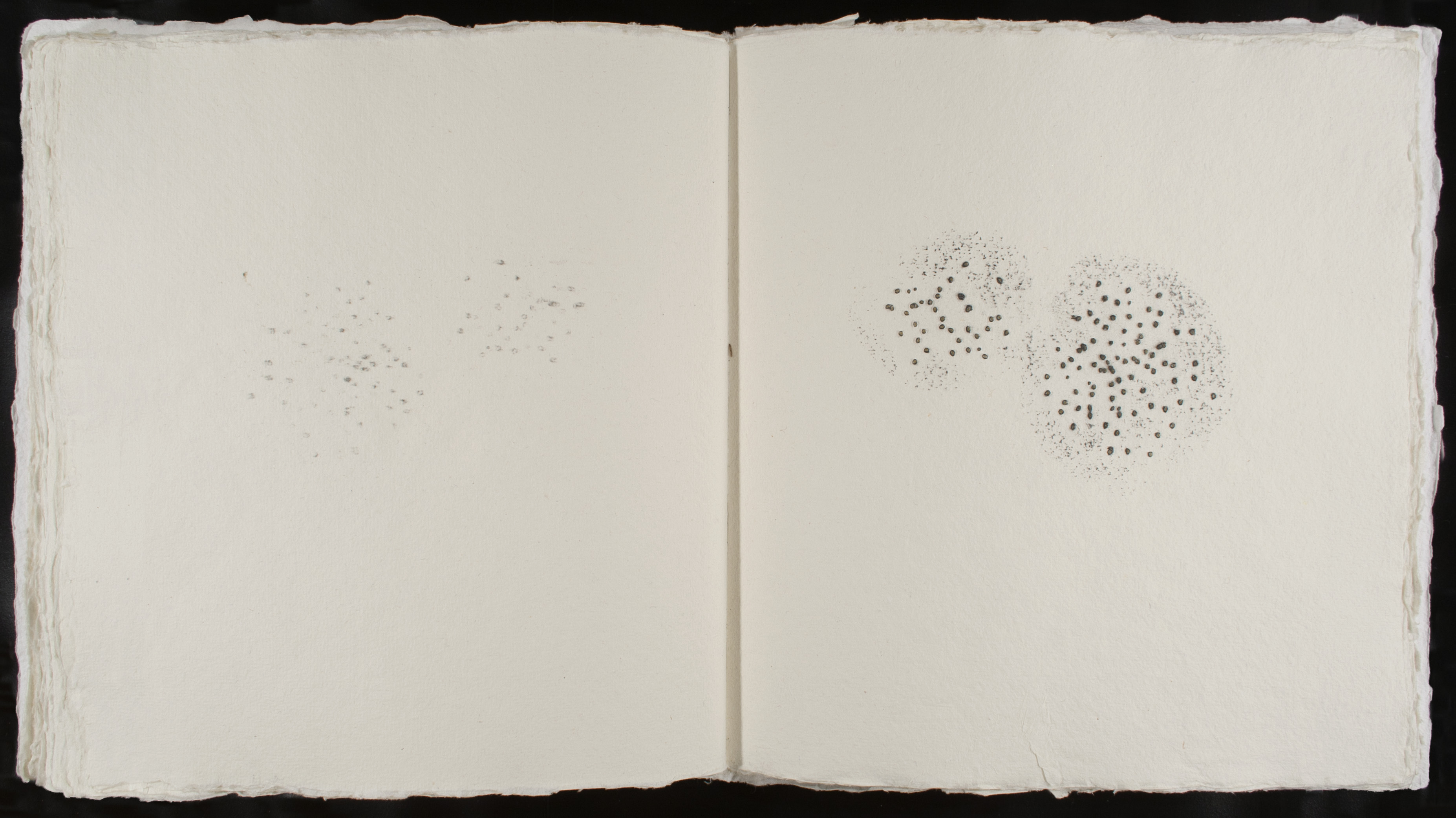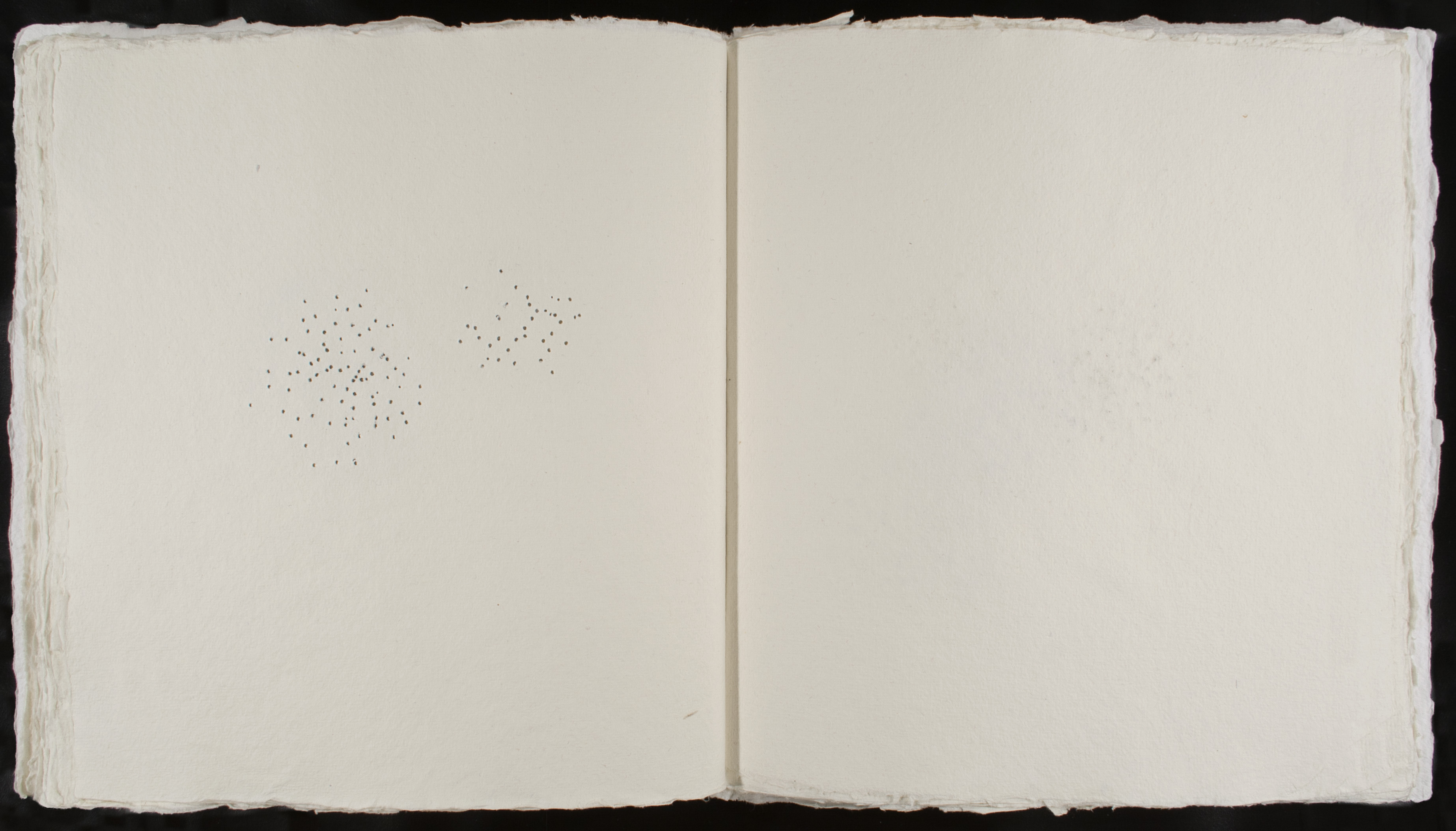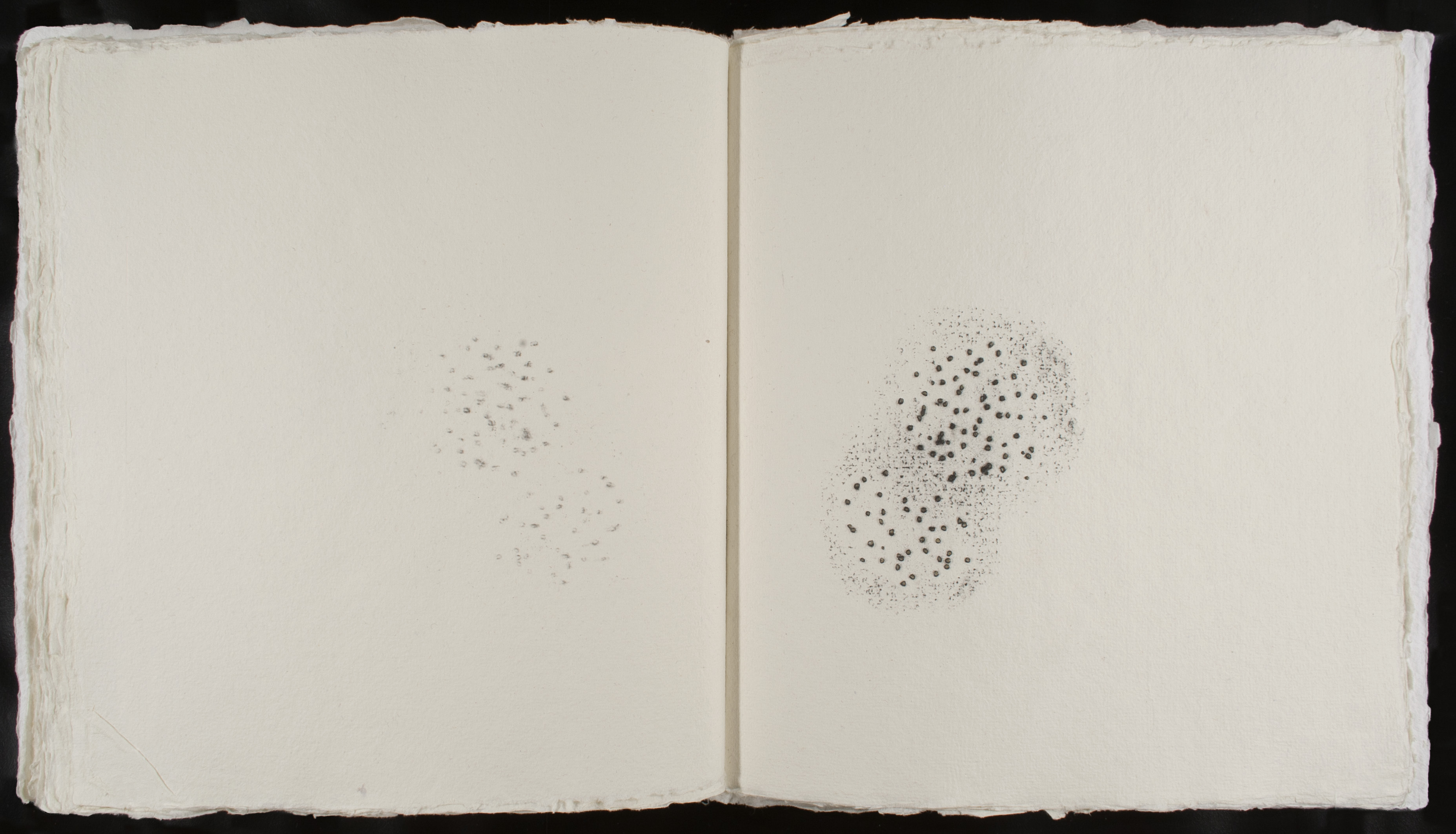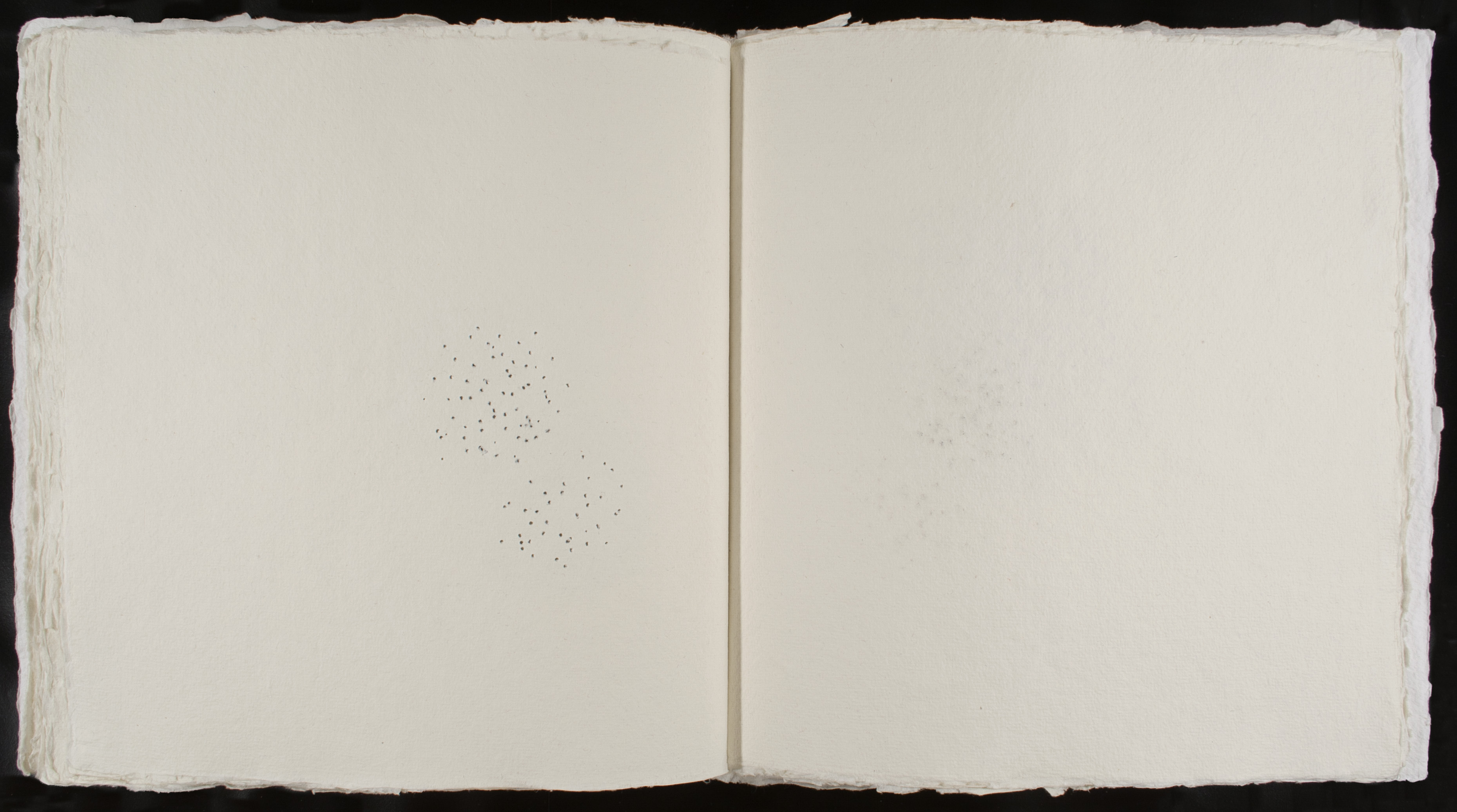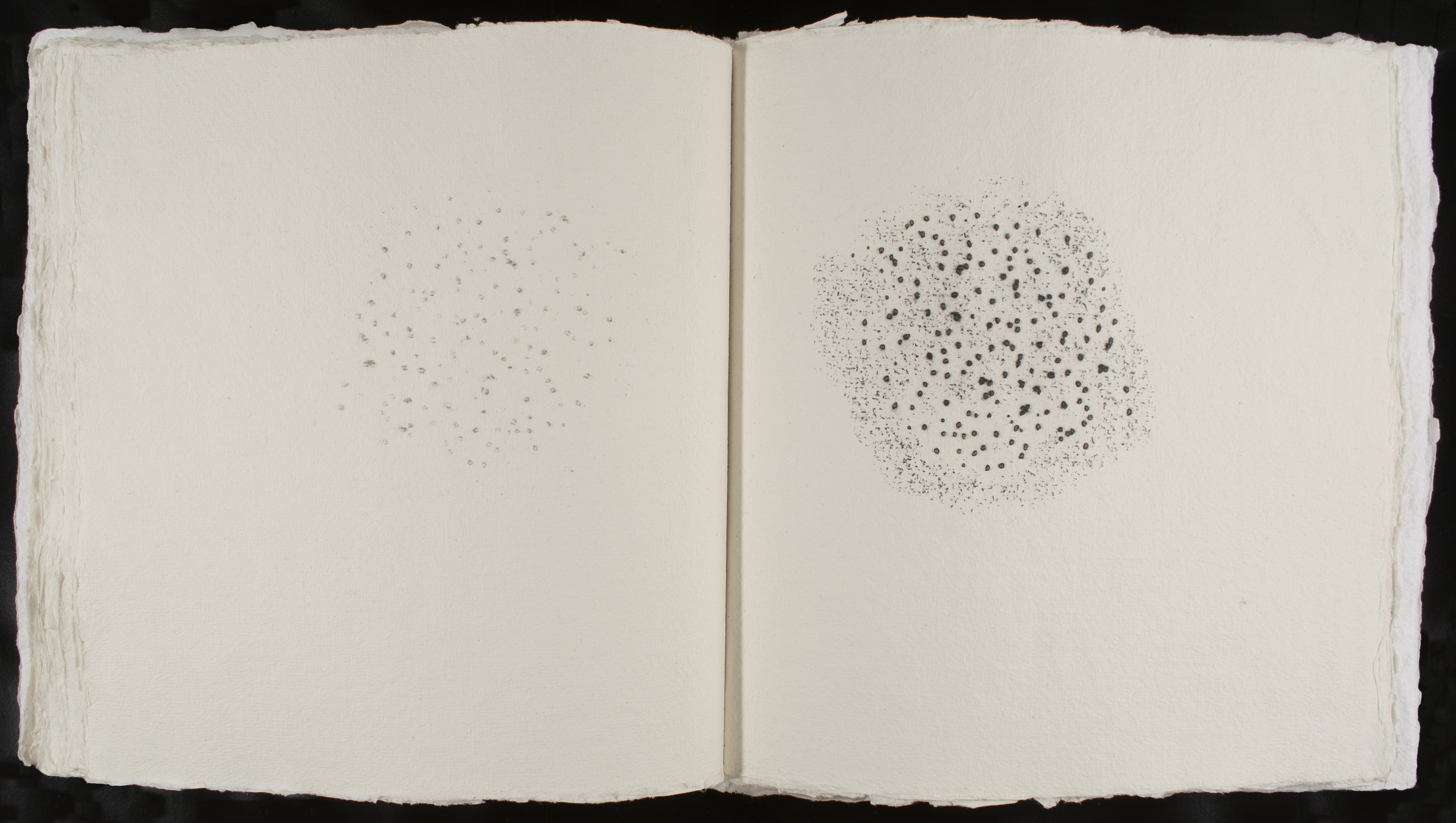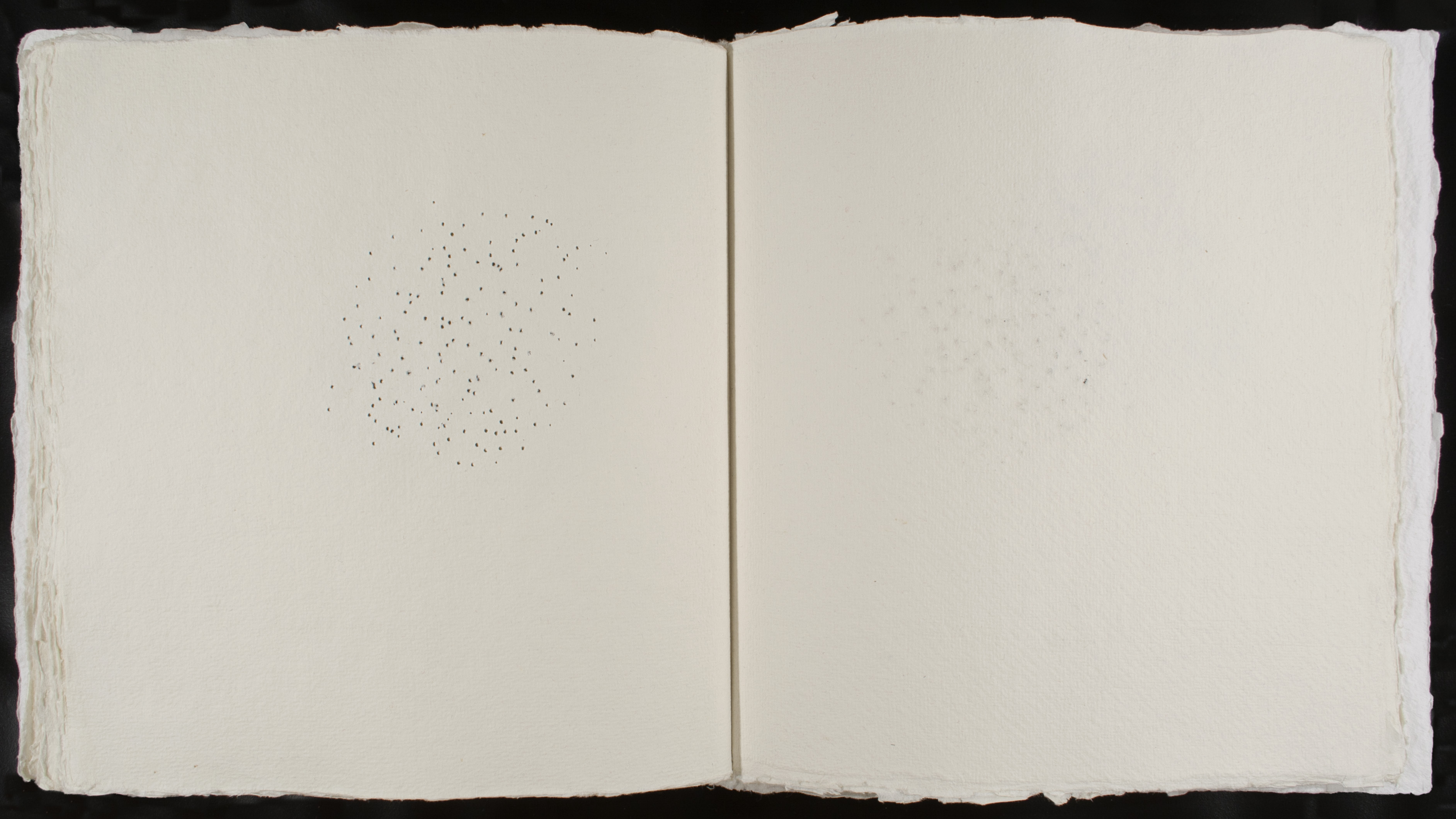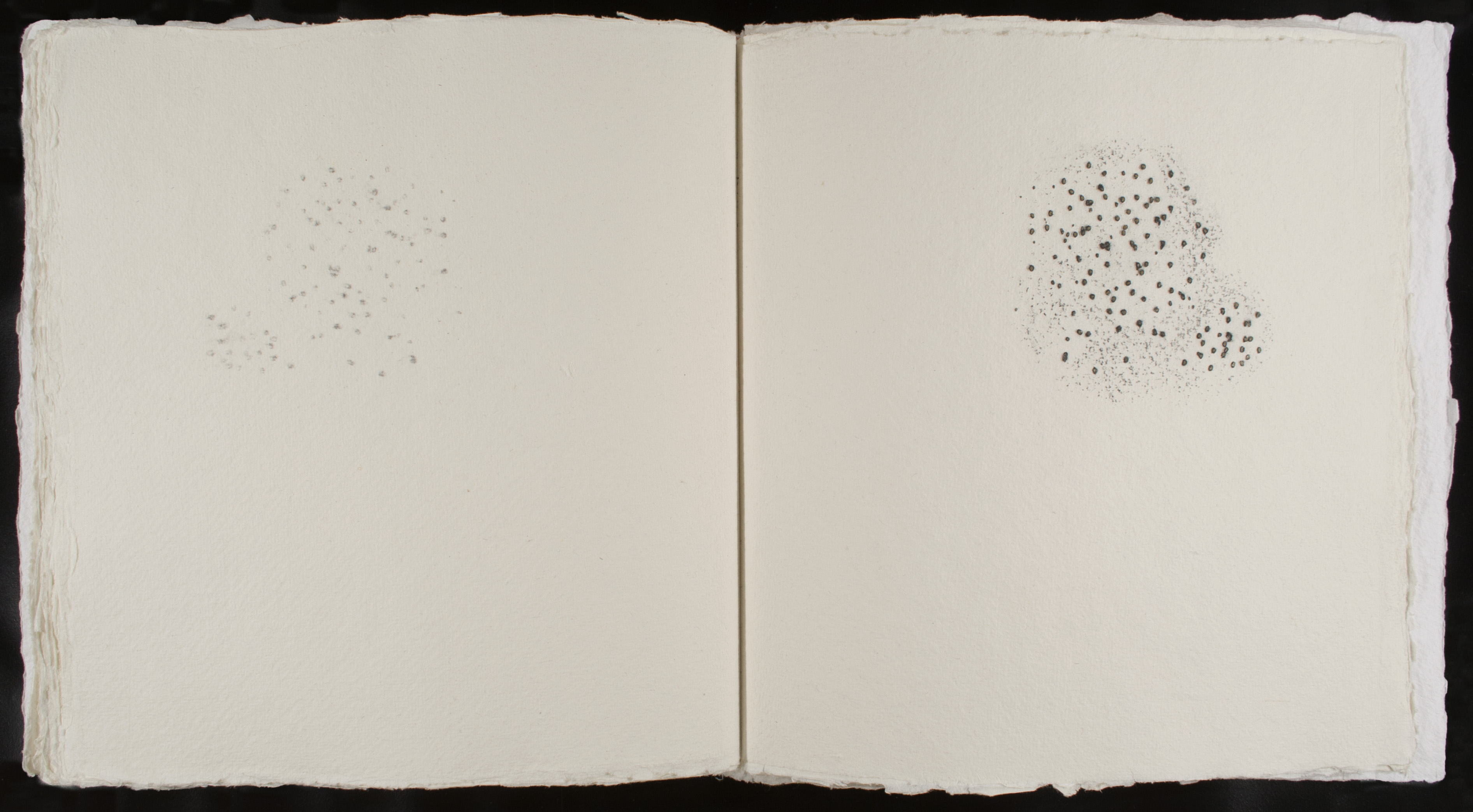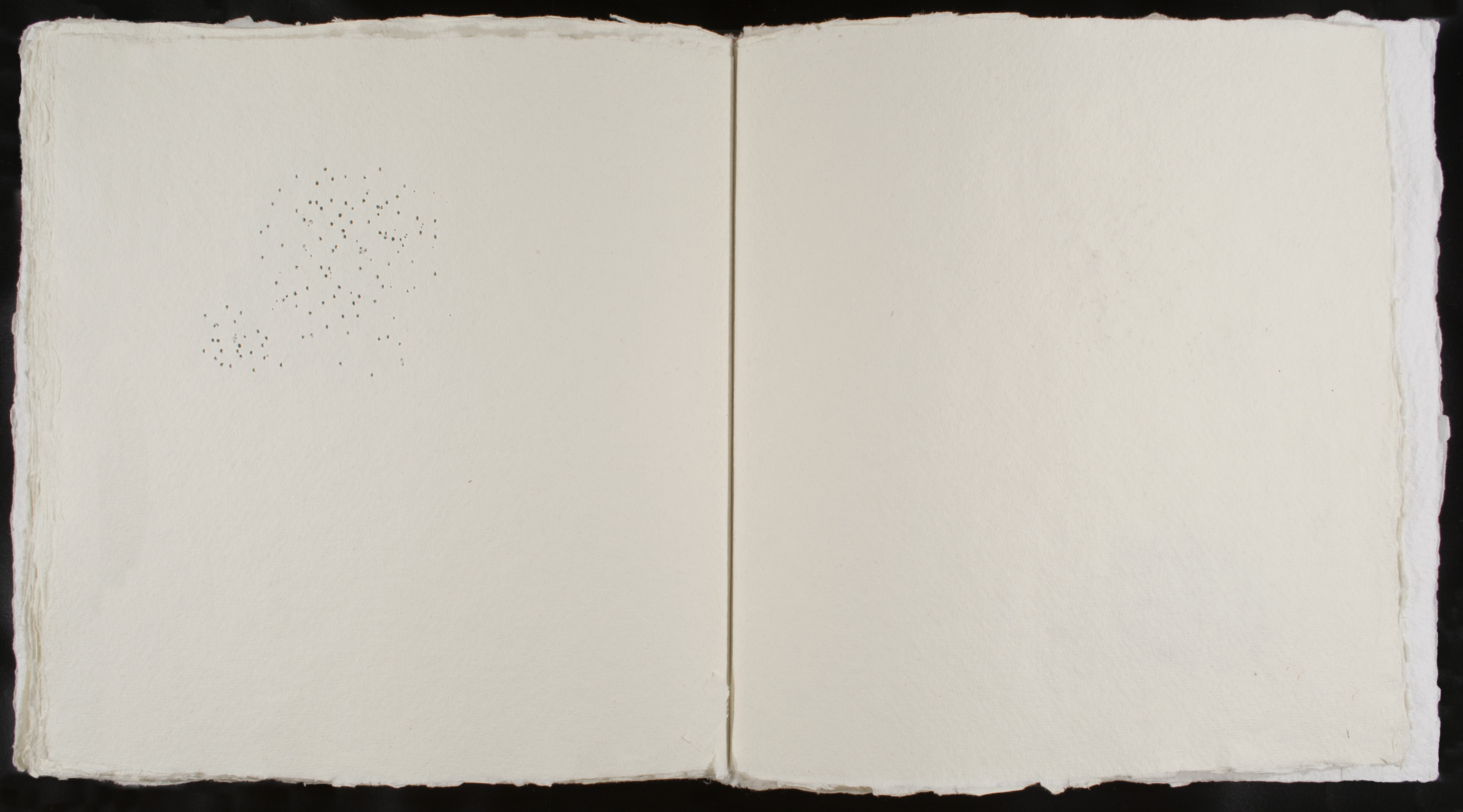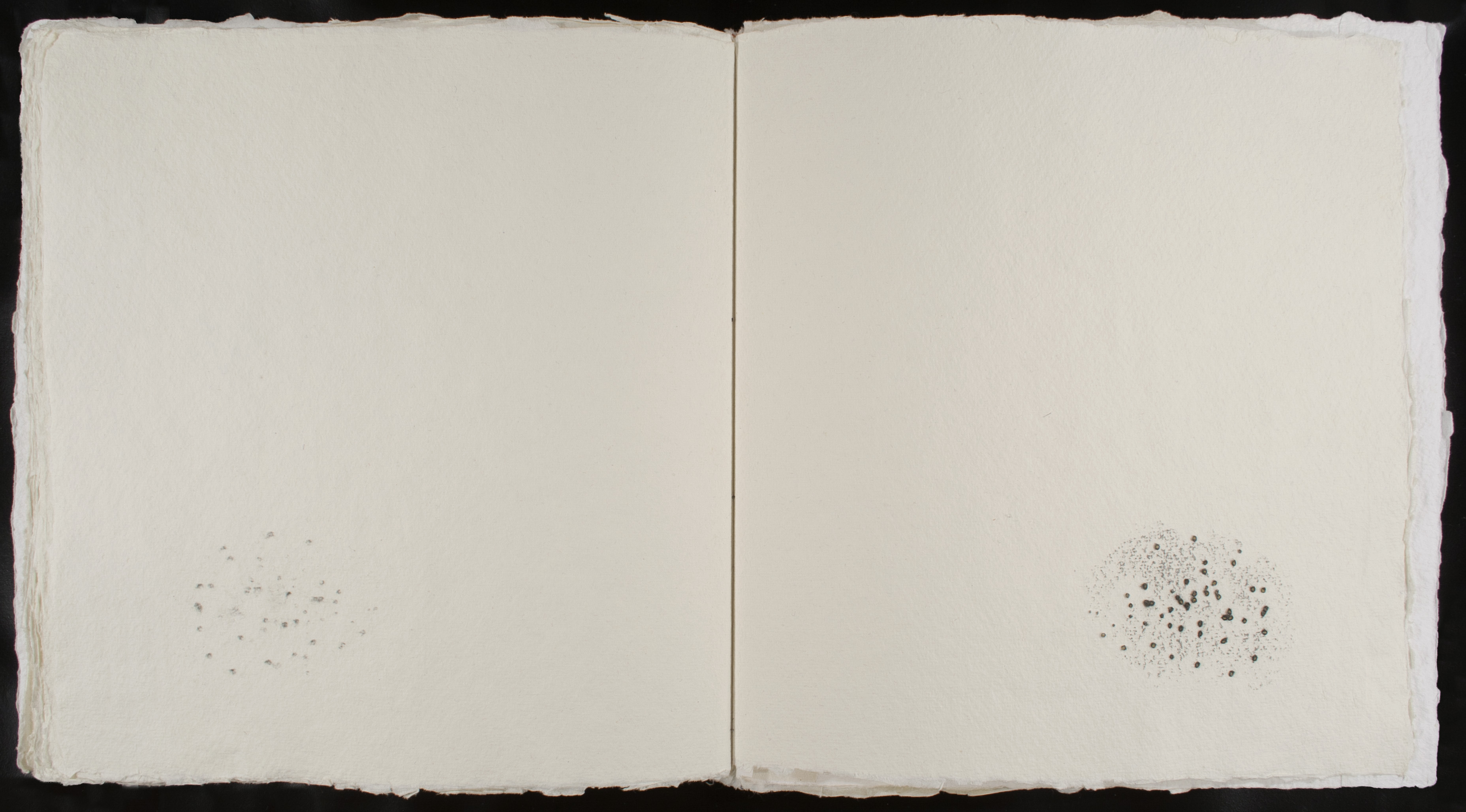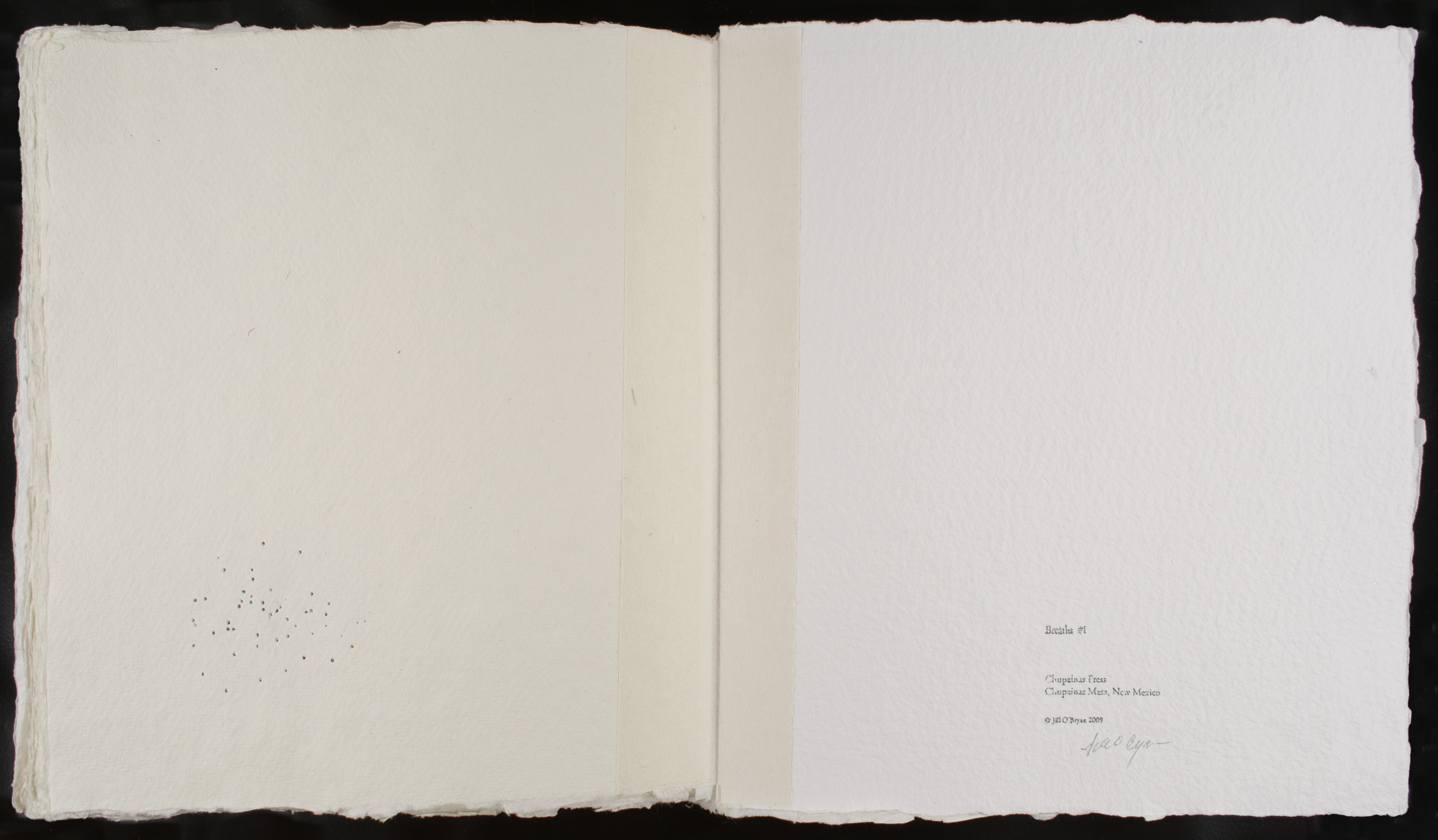Jill O’Bryan, Breaths #1, 2009, artist’s book: graphite on paper, punctured, 8 ½ x 8 x ½ inches (21.6 x 20.3 x 1.3 cm), closed. © Jill O’Bryan / Photo: Jill O’Bryan
Audio Transcript
Jill O’Bryan’s delicate and thoughtful artist’s book, Breaths #1 from 2009, continues her longstanding investigation of aesthetics, meditation, and personal endurance. On each page of Breaths #1, the viewer can observe the amorphous forms composed of collected puncture marks and transferred graphite–each hole representing one breath taken by the artist. O’Bryan’s drawings usually have a spare, minimal quality to them and involve serially repeating colors, materials, and shapes. Throughout her oeuvre, O’Bryan uses the repetitive mark in various forms to represent the duration of individual breaths. In some of her other “Breaths” works she has astonishingly accumulated such representative marks into the tens of thousands. The patterns that arise from her breath markings are never intentional but rather emerge organically as fluid and dynamic shapes, here resembling seeds or tumbleweeds moving through air.
In Breaths #1, each page-spread of pulpy, unrefined white paper bears one or two groups of gathered puncture marks on a blank background, rubbed over with graphite. Each shape is similar in form and content, seemingly floating or turning across the page, but also unique–each differing slightly in size, placement, and number of holes. Having usually worked in singular drawings on paper, O’Bryan felt that this particular concept most appropriately called for the format of an artist’s book. In a book, she could present a continuum of drawings united by one theme; additionally, a book enables individual handling and encourages a personal, intimate encounter with her work. Furthermore, while O’Bryan does not think of the markings or punctures in her drawings as literal text, they initially related to her doctoral dissertation. After temporarily diverting her attention from her studio work to finish her dissertation in 2000, O’Bryan was searching for a way to return to drawing and the visual arts. She began to make marks as a symbolic erasure of her dissertation, with each mark eliminating a word, one by one. Eventually the artist’s original impetus dissipated, and her markings now explore the notions of breathing, endurance, and meditation. In this book format, however, a reference to early associations with text nevertheless remains present.
While the display of Breaths #1 under a plastic case does not allow for direct participation during the exhibition, the viewer will ideally turn the pages and see O’Bryan’s drawings in succession. Through the punctured holes of Breaths #1, O’Bryan allows air to move in and out of the pages as they are turned. In this way, O’Bryan translates the action of her breathing into both a physical and visual representation. The holes and graphite leave traces of the artist and her process; each grouping creates a mirror image on the verso of the page, playing with notions of exterior and interior, inhaling and exhaling. As a kind of therapy or meditation, O’Bryan establishes a natural rhythm of drawing with her body–a process as important as the final visual result.
Jill O'Bryan Biography
